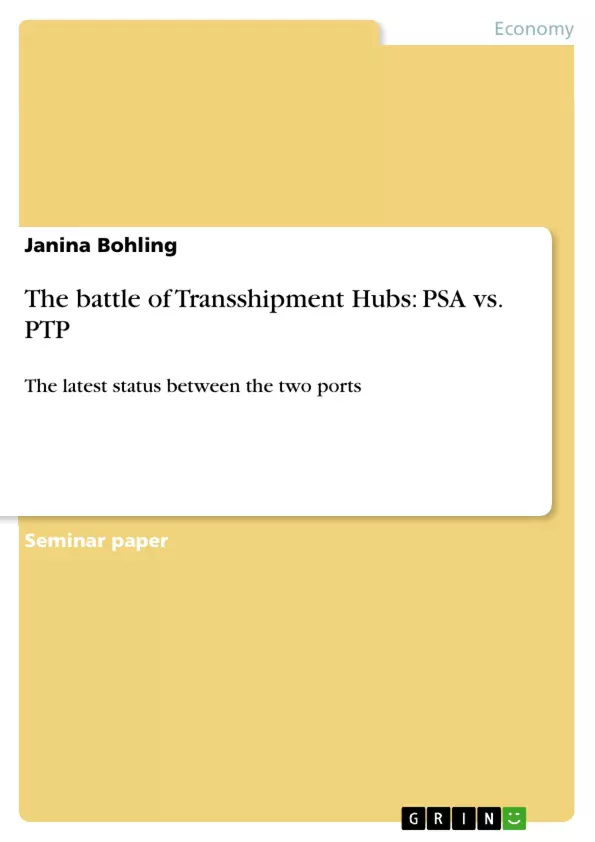This assignment reviews the latest status between the Port of Singapore (PSA) and the Port of Tanjung Pelepas (PTP). In November 1999, PTP was officially opened and declared its goal of challenging PSA to become East Asia’s leading transshipment hub. Up to then, PSA was the dominant transshipment hub, thus enjoying a monopoly in this business of Southeast Asia.
Inhaltsverzeichnis (Table of Contents)
- Introduction
- Latest status between the two ports
- Facilities and connectivity
- Development of container throughput and future expansion
- Conclusion
Zielsetzung und Themenschwerpunkte (Objectives and Key Themes)
This assignment aims to provide a comprehensive overview of the current status of the Port of Singapore (PSA) and the Port of Tanjung Pelepas (PTP), two major transshipment hubs in Southeast Asia. The paper explores the competitive landscape between these ports, examining their facilities, connectivity, container throughput, and future expansion plans.
- Competitive Landscape of Transshipment Hubs
- Comparison of Infrastructure and Superstructure
- Port Connectivity and Customer Base
- Container Throughput and Growth Trends
- Future Expansion Plans and Strategies
Zusammenfassung der Kapitel (Chapter Summaries)
The introduction provides background information on the emergence of PTP as a competitor to PSA, highlighting their strategic location in the Straits of Malacca. The chapter outlines the unique advantages PTP had over PSA, including dedicated terminals and lower costs, which enabled it to challenge PSA's dominance in the transshipment market.
The second chapter delves into a detailed comparison of PSA and PTP, focusing on their facilities, connectivity, and customer base. It emphasizes the importance of infrastructure and superstructure for efficient port operations while highlighting the growing significance of customer service and time-based competition in the industry.
The chapter concludes with an examination of the development of container throughput and future expansion plans for both ports. It discusses the importance of container traffic and value-added services in the port operating business and highlights the strategic role of port operations within the broader maritime logistics system.
Schlüsselwörter (Keywords)
The primary focus of this paper is on the competitive landscape of transshipment hubs, specifically the Port of Singapore (PSA) and the Port of Tanjung Pelepas (PTP). Key concepts include facilities and connectivity, container throughput, future expansion plans, and strategic location within the maritime logistics system.
- Citar trabajo
- Janina Bohling (Autor), 2014, The battle of Transshipment Hubs: PSA vs. PTP, Múnich, GRIN Verlag, https://www.grin.com/document/272941



